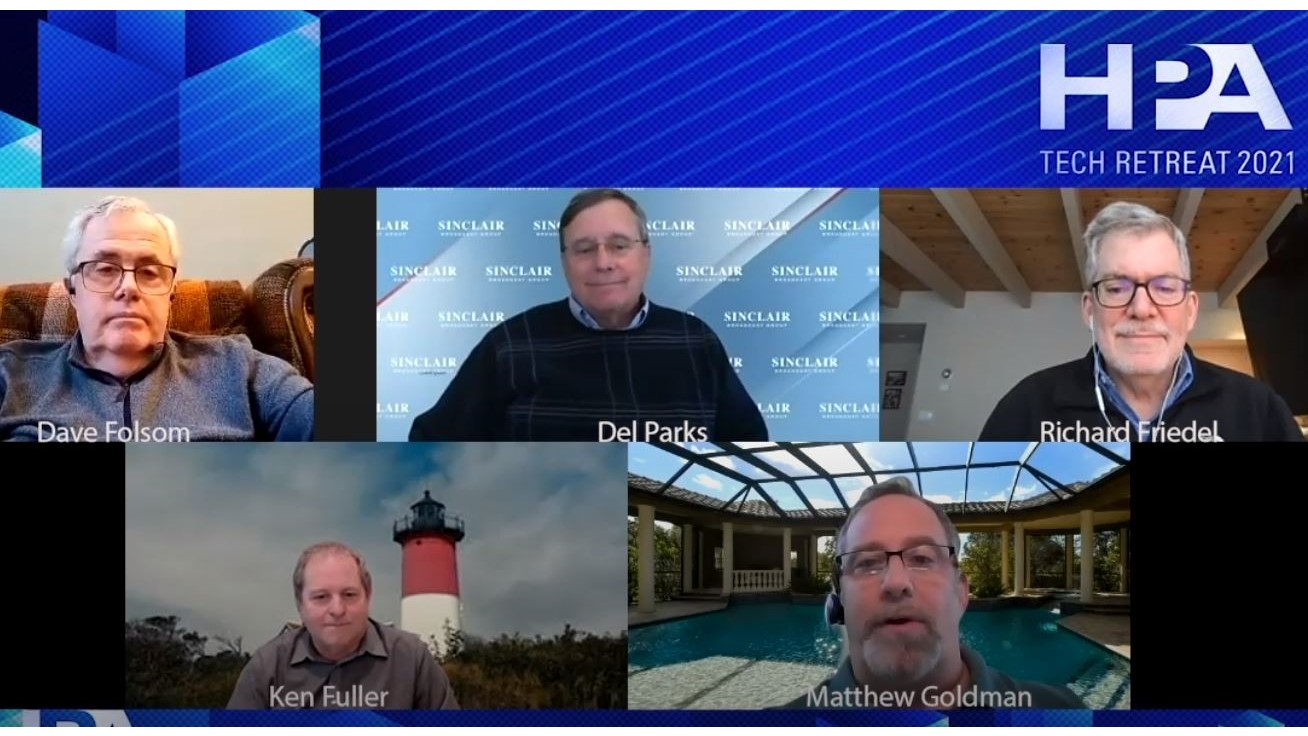HPA Tech Retreat: IP Is the Key for Broadcast’s Evolution
IP opens many new doors for broadcasters, from ATSC 3.0 to remote production

WASHINGTON—Broadcast television is no longer unique, and that will open up new and exciting doors over the next few years. More specifically, the broadcast industry’s transition to IP technology allows them to operate and compete in streaming markets, which will be a boost as the industry looks to transition to ATSC 3.0, embrace remote production and explore new opportunities to engage with viewers.
This was the focus of last week’s two-part Broadcasters Panel during HPA Tech Retreat 2021. The panel was moderated by industry pundit Matthew Goldman and featured Del Parks of Sinclair Broadcast Group, Dave Folsom of Pearl TV, Ken Fuller of CBS and Richard Friedel of Fox as panelists.
IP FOR ATSC
With IP a critical feature of the ATSC 3.0 standard, traditional video media systems can now move into new areas, according to Parks.
“Having an IP backbone does a couple of things: It gets us into a different operating environment globally, but it also gives us to a large degree some interoperability with 5G, with LT, with existing telecommunications,” Parks said. “We have in our labs at CES and NAB demonstrated switching back and forth between 5G and ATSC 3.0 seamlessly.”
Friedel cited the field experience of many Fox Sports broadcasters, who are now using 5G to transport video from venues to broadcast centers instead of fiber or other newsgathering technology.
“We are essentially wireless broadband,” Friedel said. “That’s really exciting, you can just imagine the business models and the business ideas that our people can come up with to find ways to monetize it, of course, but also to build exciting things for consumers.”
IP also helps lower the cost of entry for NextGen TV, as off-the-shelf equipment can now be used, Folsom noted.
Get the TV Tech Newsletter
The professional video industry's #1 source for news, trends and product and tech information. Sign up below.
REDFINING TV SERVICE
ATSC 3.0 will change how TV is delivered and what can be delivered over broadcast, but what is provided to viewers is also changing because of the rise of streaming services.
With the recent launches of Disney+, HBO Max and Peacock, content that previously would have debuted on traditional broadcast networks is being specifically created and exclusively shown on these streaming services. That is bringing broadcast TV full circle, according to Parks, who believes that over-the-air content will become more localized, like it was in the early days of television.
Local news and other live, locally-focused content will become key to fill out daily broadcast schedules as there is less original and syndicated content available; moved to fill out the library of these streaming services.
Broadcasters aren’t standing still, though. They’re launching their own OTT and other digital channels, Friedel explained, with nearly every broadcaster streaming their signal. But broadcasters need to be aware of how their content is viewed.
“At first, you were watching content on your phone, but now it has moved to the TV, so the level of expectation has changed among consumers,” said Fuller.
Broadcasters will not only be limited to sharing over-the-air content, however. Combining broadcast with IP gives broadcasters opportunities like data distribution, mobile phones—Parks mentioned ONE Media’s Mark One phone—and infotainment.
“Television is just one service inside of an IP broadcast,” said Parks. “An important service, but it’s one. There can be others.”
The full Broadcaster Panels are available to view on-demand via the HPA Tech Retreat Website.
